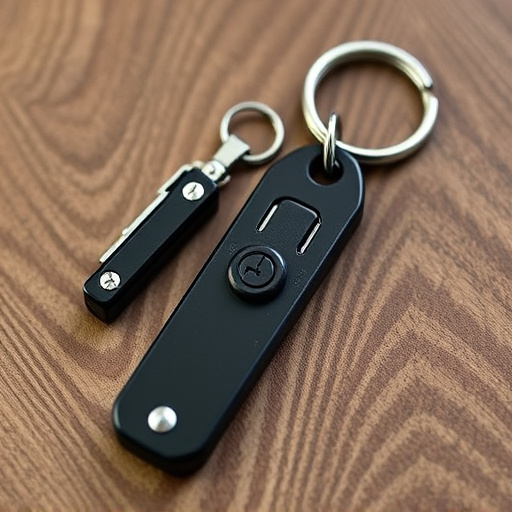Keychain weapon legality varies by region, with permit requirements differing based on knife length, blade type and local laws. Understanding these Keychain Weapon Permit Requirements is crucial for legal compliance and informed decision-making when choosing a compact self-defense device that meets stringent safety standards.
Stay informed about keychain safety device legal requirements with our comprehensive guide. We break down the legalities of keychain weapons, exploring permit requirements across different regions. From state-by-state comparisons to essential safety features, ensure your device complies with local laws. Understand what it takes to obtain a keychain weapon permit and make an informed decision in today’s diverse legal landscape.
- Keychain Weapon Legalities: A Comprehensive Overview
- Permit Requirements: What You Need to Know
- Regional Regulations: State by State Comparison
- Safety Features: Ensuring Device Effectiveness
Keychain Weapon Legalities: A Comprehensive Overview
In many jurisdictions, the legality of carrying a keychain weapon, often referred to as a personal defense key chain or self-defense device, is a complex matter that varies based on local laws and regulations. While some regions allow certain types of keychain weapons with specific permit requirements, others have strict restrictions or outright prohibit their possession. It’s crucial for individuals considering carrying such a device to understand the keychain weapon permit requirements and legal implications in their area.
The definition of what constitutes a “weapon” and acceptable self-defense tools can differ widely across countries and states. Common regulations include restrictions on knife length, blade type, and overall design. Some jurisdictions might only permit certain types of keychain weapons, such as non-lethal options like pepper spray or stun devices, while others may allow more traditional self-defense knives or tools. Ensuring compliance with local laws is essential to avoid legal consequences.
Permit Requirements: What You Need to Know
When considering carrying a keychain weapon for self-defense, understanding the legal requirements is paramount. The permit system varies significantly across jurisdictions, so prospective owners must familiarize themselves with local laws. Obtaining a keychain weapon permit requires meeting specific criteria, which often includes completing a background check and demonstrating proficiency in safe handling and use.
The Permit Requirements ensure that only responsible individuals can legally carry such devices. These measures are designed to prevent misuse and promote public safety. As such, applicants may need to provide proof of identity, residency, and sometimes even pass a written or practical test. Staying informed about the precise keychain weapon permit requirements in your area is crucial before making the decision to purchase and carry this compact defense tool.
Regional Regulations: State by State Comparison
Regional regulations regarding keychain weapon permit requirements vary significantly from state to state. Some states have strict laws prohibiting any form of concealed weapons, including those attached to keychains, while others allow for specific types under certain conditions. For instance, Texas allows residents aged 21 and above to carry protective devices like keychain knives or pepper spray without a permit, whereas New York requires a permit for even the smallest firearm or stun gun.
In many states, obtaining a keychain weapon permit involves background checks, safety training, and possibly waiting periods. Some regions also differentiate between types of weapons, with stricter regulations on firearms compared to bladed tools or pepper spray. Staying informed about local laws is crucial, as violating these regulations can lead to severe penalties.
Safety Features: Ensuring Device Effectiveness
When considering a keychain safety device, it’s paramount to assess its safety features and effectiveness. Such devices, designed for self-defense, must meet specific legal requirements, including those related to keychain weapon permit regulations. Beyond compliance, the device should incorporate robust mechanisms like durable construction, sharp and reliable blades, and ergonomic designs for easy handling in emergency situations.
Additionally, look for features enhancing safety rather than posing risks. This includes automatic locking mechanisms to prevent accidental deployment, safety switches or triggers, and impact-resistant materials. Ensure the device’s effectiveness by checking user reviews, understanding return policies, and considering demonstrations or training offered by manufacturers. Meeting these criteria guarantees a keychain safety device not only complies with legal requirements but also provides the intended level of security.
When considering the legal requirements for keychain safety devices, it’s essential to navigate a complex web of regional regulations and permit systems. As this article has highlighted, the legality of keychain weapons varies significantly from state to state, with each region having its own specific rules and restrictions. Understanding these permit requirements and safety features is crucial for ensuring compliance and peace of mind. By staying informed about your rights and responsibilities, you can make an informed decision when choosing a keychain safety device that meets both legal standards and personal security needs.
